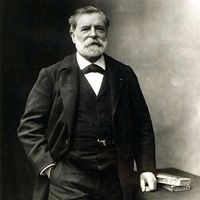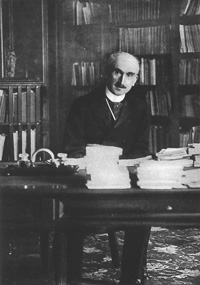Etienne-Jules Marey & Henri Bergson
 Marey left a legacy of technical innovation not just in scientific journals but in a wide range of material forms, from beautifully crafted machines, to photographs, to engravings, to castings in bronze. I have found this multiple legacy strangely compelling. As the son of an engineer and a builder of custom electronic instruments, I have tended to approach my own creative work in much the same way—as both an artistic and a technical challenge—and this installation is no different. I have met its various demands as comprehensively as I imagine Marey might have done, not only creating the video and the music for the space, but also redesigning the architecture, building the machines, programming the electronics, writing the software, and installing the necessary hardware. To me, all of it is important: the “art” of the installation lies in the totality of this built environment.
Marey left a legacy of technical innovation not just in scientific journals but in a wide range of material forms, from beautifully crafted machines, to photographs, to engravings, to castings in bronze. I have found this multiple legacy strangely compelling. As the son of an engineer and a builder of custom electronic instruments, I have tended to approach my own creative work in much the same way—as both an artistic and a technical challenge—and this installation is no different. I have met its various demands as comprehensively as I imagine Marey might have done, not only creating the video and the music for the space, but also redesigning the architecture, building the machines, programming the electronics, writing the software, and installing the necessary hardware. To me, all of it is important: the “art” of the installation lies in the totality of this built environment.

Bergson has been an equally compelling source of inspiration, especially for the way his philosophy frames an aesthetic experience of time. Composers and performers naturally think about time in these terms, and, as a creator of real-time computer music, I have been especially sensitive to the ways that such systems allow performers to conceive and control the passage of musical time. A decade ago I spent almost two years as a composer and researcher at the Institut de recherche et coordination acoustique-musique (IRCAM) in Paris, where I first developed some of the ideas that still inform my work in this genre. It was here that I also worked closely with two remarkable French engineers who saw the fusion of science and art not merely as an option but as a creative imperative. It is this particularly French imperative, evident in the work of both Bergson and Marey, that I have sought to explore and, in a sense, to honor in the present work.